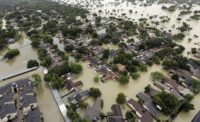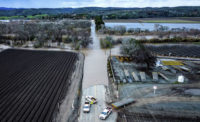A just-released detailed analysis of the catastrophic 2021 Texas winter storm finds systemic flaws in the state's electric sector contributed to a “cascade of failures” that overwhelmed its power grid and left millions freezing in the dark.
This 124-page report, released Feb. 16 by the Texas Section of American Society of Civil Engineers (ASCE), called for sweeping improvements in the state's electrical infrastructure to increase reliability and resilience in the beleaguered system.
The Electric Reliability Council of Texas (ERCOT) operates the electric grid and manages the deregulated market for 75% of the state.
“The failures that caused overwhelming human and economic suffering ... will increase in frequency and duration due to legacy market design shortcomings, growing infrastructure interdependence, economic and population growth drivers and aging equipment even if the frequency and severity of weather events remains unchanged,” the report states.
Report authors, 25 members of an ASCE Texas chapter committee, included public agency officials, private consultants and educators who collected and complied state-wide data
“The recommendations included in these reports get results,” says Patrick Beecher, president of ASCE Texas. “We saw this in 2019, when the ASCE Texas recommendations on flood mitigation were adopted and funded after policy makers sought out guidance in the aftermath of Hurricane Harvey.”
A series of winter storms in February 2021 immobilized Texas while an ensuing cold wave dropped temperatures to record lows, placing the state under constant winter storm, hard freeze and wind chill warnings.
During the event, more than 4.5 million homes and businesses were left without power.
ASCE estimates the economic impact of the storm was between $200 billion and $300 billion, an amount greater than the impact from either of the two most costly hurricanes in U.S. history: Harvey ($145 billion) and Katrina ($161 billion). The Dept. of State Health Services estimates the death toll from the event at 246.
Multiple Failures
The report focused on flaws in electric grid reliability and resilience as a direct and indirect material contributor to economic harm and human tragedy.
ASCE said the way the Texas power-generation system is set up creates a model that exposes the state to risk. Power generators are paid to generate, not for reliability, the report said.
The natural gas industry’s capacity-based market requires it to pay a premium to ensure reliability of supply. Texas electricity generators, in contrast, are interruptible. They receive a discount for their service, but that is subject to interruption when capacity-based customers require the resource. During peak demand during the 2021 winter storm, this occurred, putting the electric grid in jeopardy.
“The outcome of this approach was the system defaulted to a run-to-fail model,” sayss Geoff Roberts, chair of the ASCE Texas committee that produced the report. “It was operated until it broke down.”
The natural gas sector also contributed to the crisis by not protecting its production facilities from severe weather conditions. Additionally, natural gas producers required a functioning electric system to operate. That interdependence increased system fragility and “led to a cascading series of failures,” Roberts says.
ASCE’s top recommendation was needed investment in generation capacity to ensure reliable, fail-safe back-up in the case of a complete grid shutdown.
So-called “Black Start” generators provide an emergency restoration energy source in case of a complete grid shutdown – which ERCOT averted by a mere four and a half minutes on Feb. 15, 2021. ASCE found that 75% of generators experienced operational problems during the storms.
The report also called for an increase of investment to ensure reliability and resilience in the system. ASCE estimated costs would have a 5% impact on ERCOT prices — vastly less than the expense a future system failure would entail.
“Prioritizing reliability and resilience costs money, but this cost is a fraction of the economic and social costs experienced when reliability and resilience is not prioritized,” Roberts says.
Other recommendations include mitigating interdependence between infrastructure sectors, regulations that encourage better business models, and increased investment on reliability though better practices by industry actors. The report also provided examination of other infrastructure sectors such as telecommunications, water systems and transportation.
Initial Actions
Since the storms, steps have been taken to improve the state’s power grid. Last May, the Texas Legislature approved Senate Bill 3, which includes a requirement of certain gas facilities to weatherize, although it limited requirements to "critical" facilities. Additional legislation established a loan plan for power companies, but which excluded direct credits for consumers.
In January, ERCOT announced that 321 of 324 electric generation units and transmission facilities fully passed inspection to meet new regulations.
“The Texas electric grid is more prepared for winter operations than ever before,” interim ERCOT CEO Brad Jones said in a statement.
Vistra, the largest power company in Texas, says it has invested $80 million in the ERCOT fleet to further harden generation for cold temperatures and improve security of fuel through measures such as installing dual fuel capabilities at gas steam units to reduce interdependence.
But ASCE says underlying weaknesses in the system remain, and the state continues to be exposed to severe winter events in the future.
“These risks are not going away and the consequences of failing to address them are dire,” Roberts says.






Post a comment to this article
Report Abusive Comment